9 Fast-Growing Berries That Will Bear Fruit in No Time
These berry varieties are ready for harvest earlier than others.
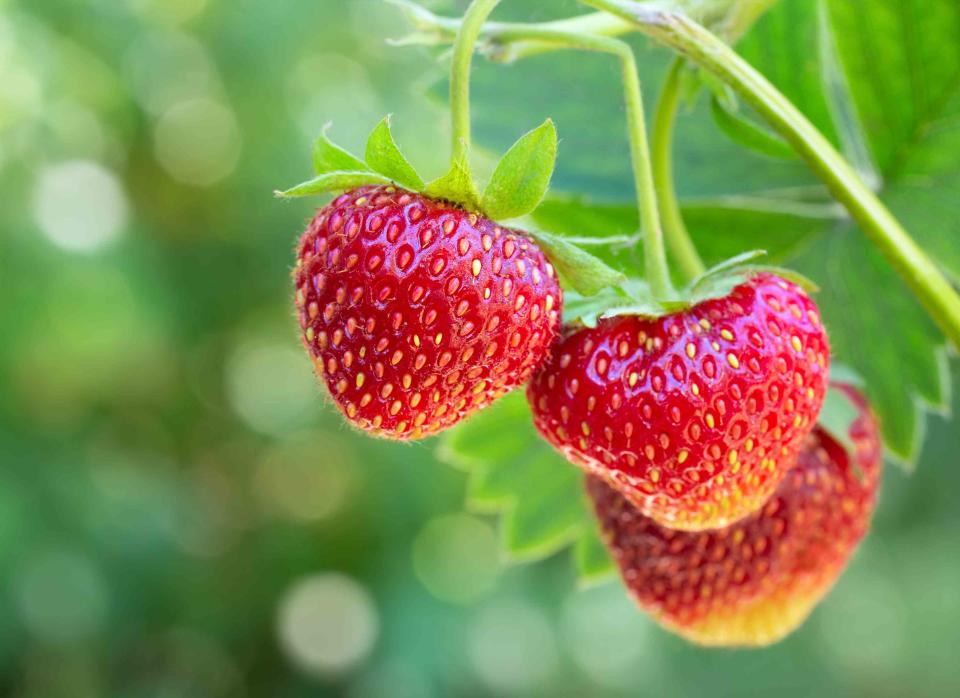
Alter_photo / Getty Images
Growing berries in your edible garden or as a hedge is a wonderful way to have easy and fresh access to delicious fruit. The only downside is that it can sometimes take berries three or more years to produce fruit after planting, meaning you'll be waiting for quite some time to reap the fruits of your labor. However, some varieties produce fruit quicker, with certain species providing you with berries within as little as a year of planting. Ahead, gardening experts share their favorite fast-growing berries to grow in your backyard.
Related: 15 Fast-Growing Fruit Trees That Will Yield a Delicious Harvest ASAP
Primocane Blackberries
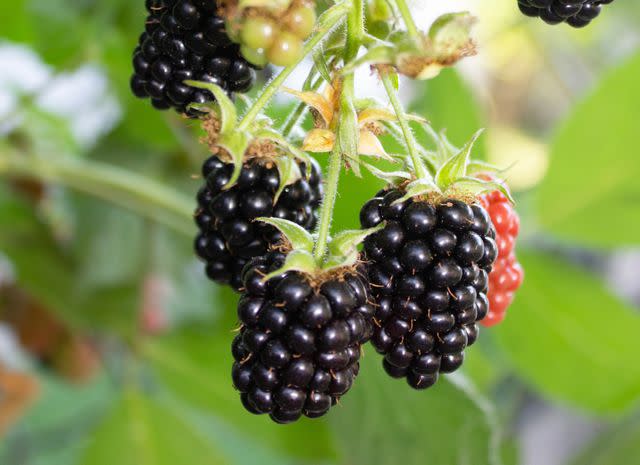
AntKus / Getty Images
If you want a blackberry that matures sooner than other varieties, opt for a primocane blackberry. "Primo means these plants produce on first-year canes, whereas most blackberries produce in the second year," says Christy Wilhelmi, founder of the Gardenerd blog and podcast and author of Grow Your Own Mini Fruit Garden. "Look for varieties with the word 'prime' in the name."
Some primo varieties may mature in the first year and produce flowers and fruit in the second year. Blackberries need warmer temperatures to produce fruit, but if the weather is too hot (90 degrees Fahrenheit or higher) for several days, this can slow down or stop fruit production. Wilhelmi recommends planting this type of blackberry in a container so they don't have the space to spread out.
Zones: 5 to 8
Time to maturity: 1 to 2 years after planting
Size: 4 to 5 feet tall x 3 to 4 feet wide
Care requirements: Full sun to partial shade; well-draining soil
Thornless Blackberry

Courtesy of Southern Living Plant Collection
Want a fast-growing blackberry that's also thornless, so you don't have to worry about being pricked at harvest time? Jim Putnam, plant expert from the Southern Living Plant Collection, recommends the Prime-Ark 'Freedom' Thornless Blackberry for its large and flavorful fruits. "Before planting this variety, install a trellis, fence, or post system to guide the canes as they grow," says Putnam. "Prune in late winter or early spring before new growth emerges."
Zones: 6 to 10
Time to maturity: 1 year after planting
Size: 4 to 5 feet tall x 3 to 4 feet wide
Care requirements: Full sun; moist, well-draining soil
Rabbiteye Blueberry

Courtesy of Southern Living Plant Collection
Rabbiteye blueberries are a commonly grown species in the south. For a quick-growing variety, Putnam recommends DownHome Harvest Bless Your Heart: "A late spring blooming variety that produces an abundance of large blueberries known for their appealing color, flavor, firmness, and shelf life," he says. Keep in mind, though, that blueberries require cross-pollination from another blueberry shrub to set fruit, so consider growing multiple varieties next to one another.
Zones: 7 to 9
Time to maturity: 1 year after planting
Size: 3 to 4 feet tall x 3 to 4 feet wide
Care requirements: Full sun; well-draining soil
Related: How to Grow Delicious Blueberries You Can Harvest Year After Year
Black Currants
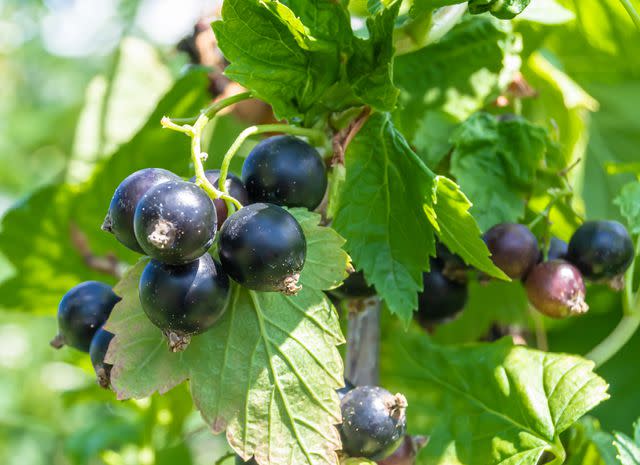
Karina Stan / 500px / Getty Images
Black currants are fast-growing shrubs that typically produce fruit within the second or third year. "Black currants are a relatively fast-growing berry that is also a bit on the tart side with a hint of sweetness," says Tucker Taylor, culinary gardener at Kendall-Jackson Wine Estate & Gardens in Sonoma, California. "The jams produced with these fruits are rich and complex."
Zones: 3 to 7
Time to maturity: 2 to 3 years after planting
Size: 3 to 5 feet tall x Up to 6 feet wide
Care requirements: Full sun; well-draining soil
Elderberries
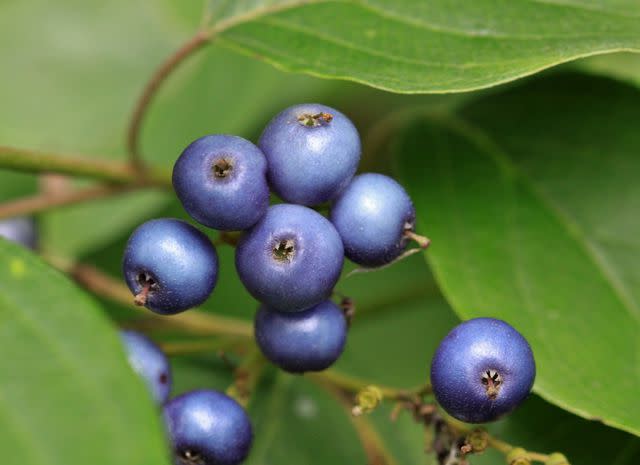
Douglas Sacha / Getty Images
Elderberries are a shrub or tree that thrives in acidic, well-draining soil. These bluish-hued small berries grow best in full sun with six to eight hours of sunlight per day. "This native fruit, while not as sweet as blackberries, has a nice tart flavor that is perfect for jams and pies," says Taylor.
Zones: 4 to 9
Time to maturity: 1 year after planting
Size: 6 to 10 feet tall x 6 to 8 feet wide
Care requirements: Full sun; acidic, well-draining soil
Related: How to Create a Food Forest—a Natural, Edible Landscape for Any Size Yard
Hascap Berries
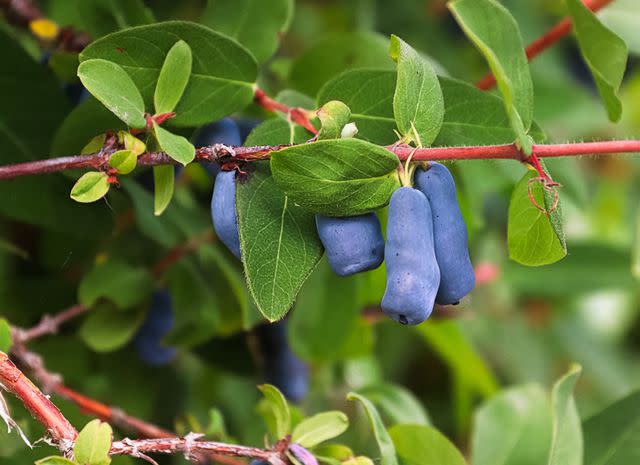
Akchamczuk / Getty Images
Looking to grow a unique berry with a dark blue, oval-shaped fruit that tastes like a mixture of blueberries and raspberries? Grow hascap berries. "Hascap berries, aka honeyberries, are relatively fast-growing berries that are actually in the honeysuckle family," says Taylor. It has a delicious, sweet, and tangy flavor.
Zones: 1 to 8
Time to maturity: 2 years after planting
Size: 3 to 6 feet tall x 4 to 6 feet wide
Care requirements: Full sun; rich, well-draining soil
Gooseberries
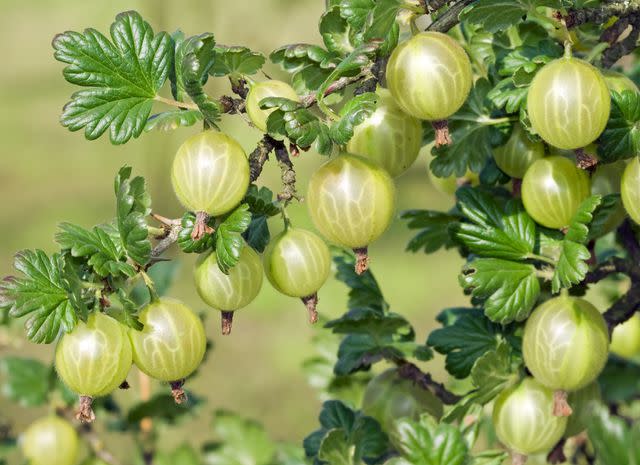
Avalon_Studio / Getty Images
These lime-green-colored, oval-shaped berries look like big, plump grapes. Gooseberries are related to currants and do best in cooler climates. Grow in a sunny to partially shady area in your landscape and in well-draining, loamy soil. Gooseberries grow in groups of two to three berries, and a mature plant can produce around 4 quarts of berries per year.
Zones: 3 to 8
Time to maturity: 1 year after planting
Size: 3 to 5 feet tall x 3 to 5 feet wide
Care requirements: Full sun to partial shade; loamy, well-draining soil
Raspberries
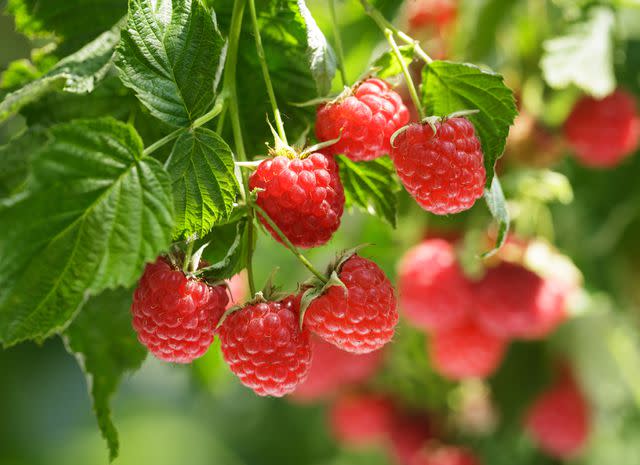
nitrub / Getty Images
If you want to have raspberries within the first year of planting, consider growing 'Joan J Raspberry,' which is fast-growing and thornless. "They also are ever-bearing so they will continue to shoot up canes throughout the season," says Nicole Dillon, master gardener, owner and flower farmer of Breemar Flower Farm in Ashland, Virginia.
Zones: 4 to 8
Time to maturity: 1 year after planting
Size: 4 to 6 feet tall x 2 feet wide
Care requirements: Full sun; fertile, soil, and well-draining soil
Strawberries
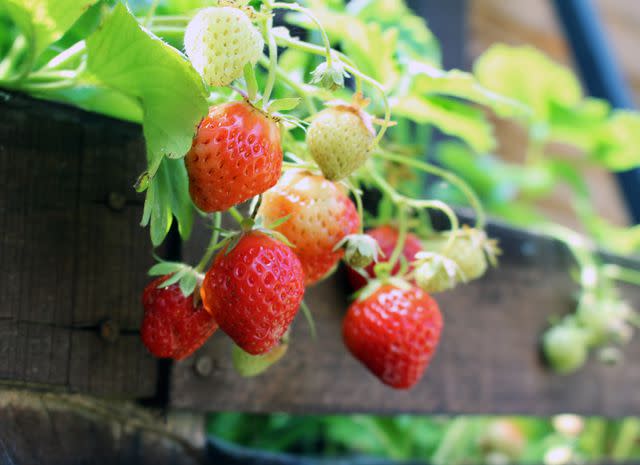
Megan Perkis / Getty Images
Grow your own strawberries for the freshest, juiciest, and plumpest supply. Wilhelmi recommends growing ever-bearing strawberries. "They produce over a longer period of time, and even over winter in warm-winter climates," she says. For a specific variety, consider 'Seascape,' which produces fruit in the first year.
Zones: 4 to 8
Time to maturity: 1 year after planting
Size: 6 to 8 inches tall x 12 to 18 inches wide
Care requirements: Full sun; well-draining, sandy, and slightly acidic soil
Related: How to Grow Sweet Strawberries That Will Produce Fruit Every Year
Read the original article on Martha Stewart.

